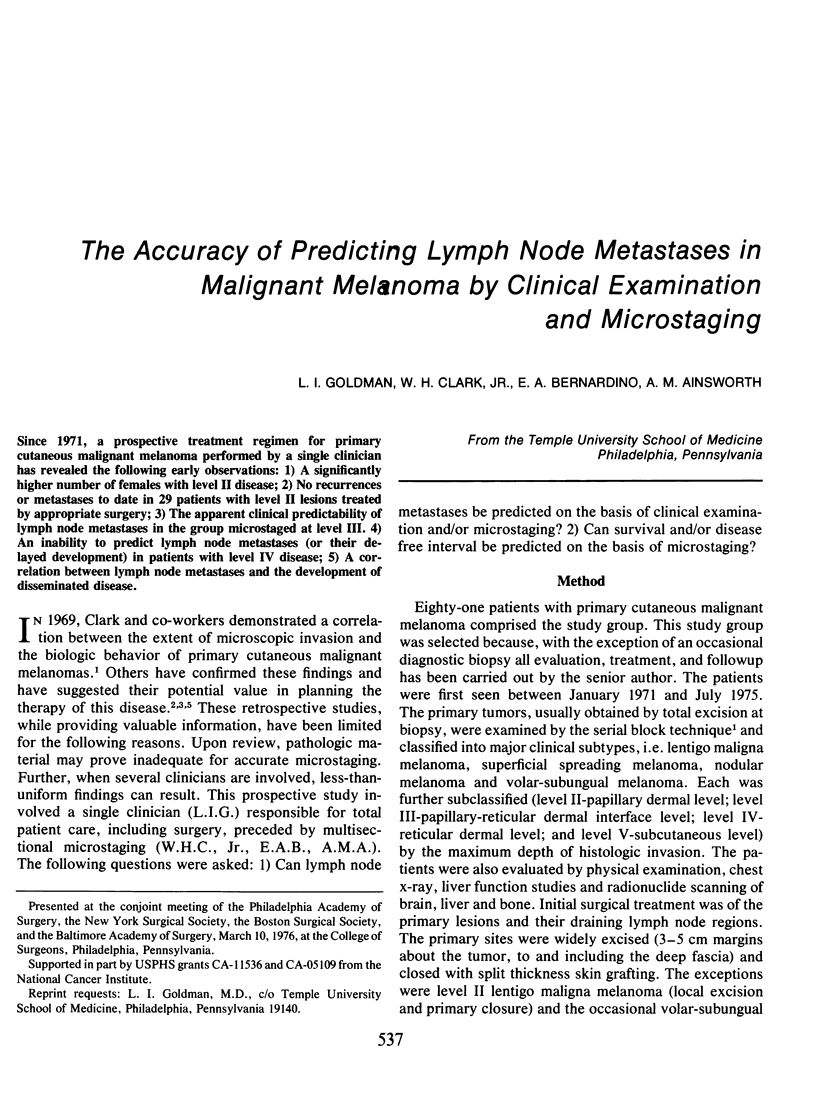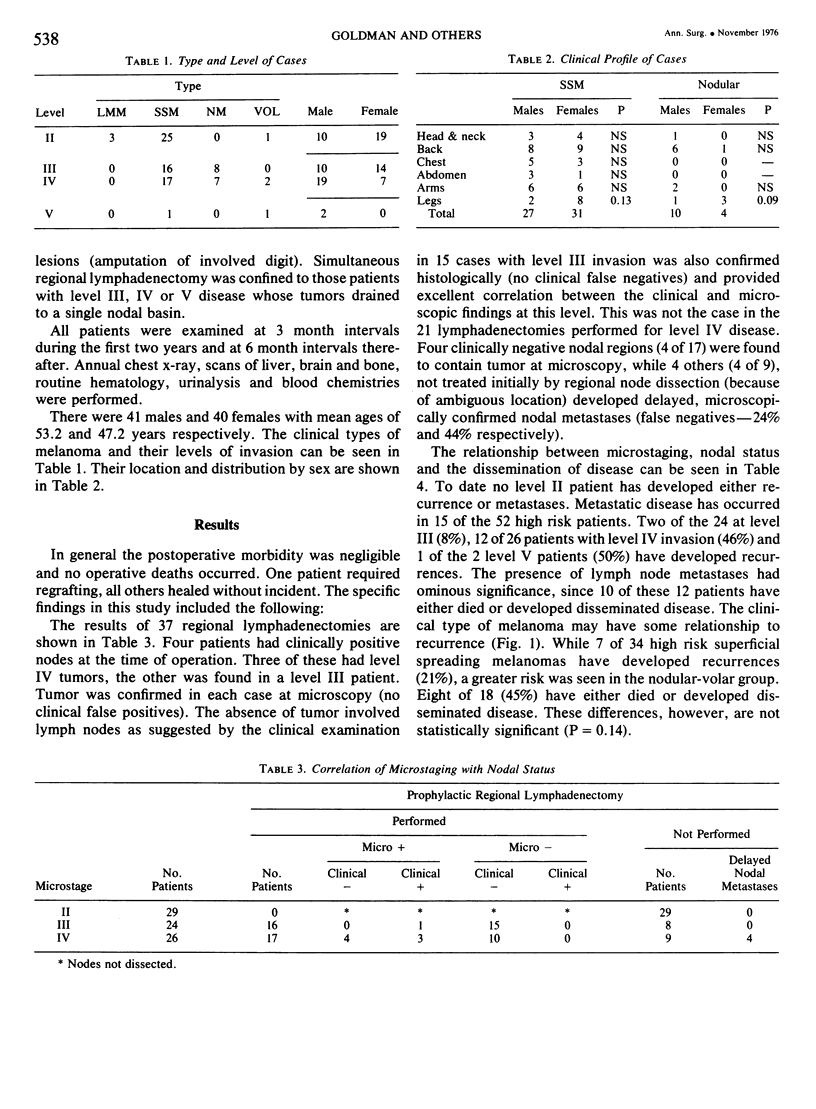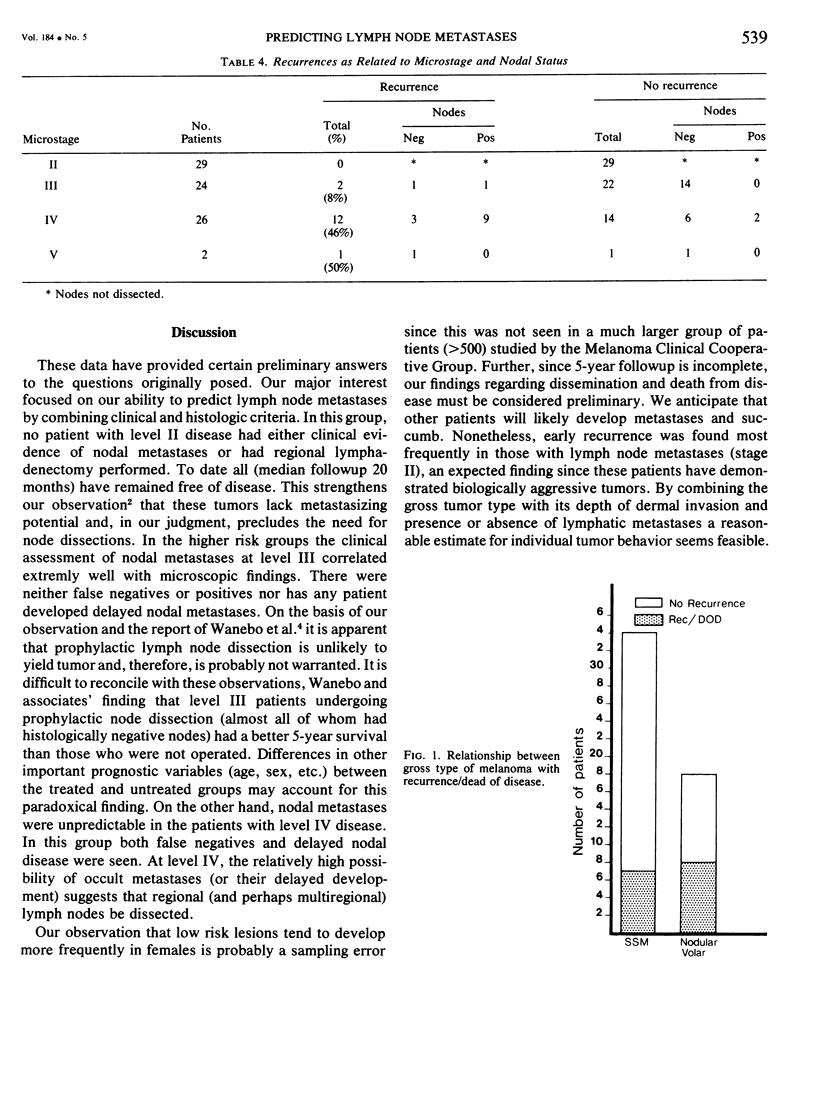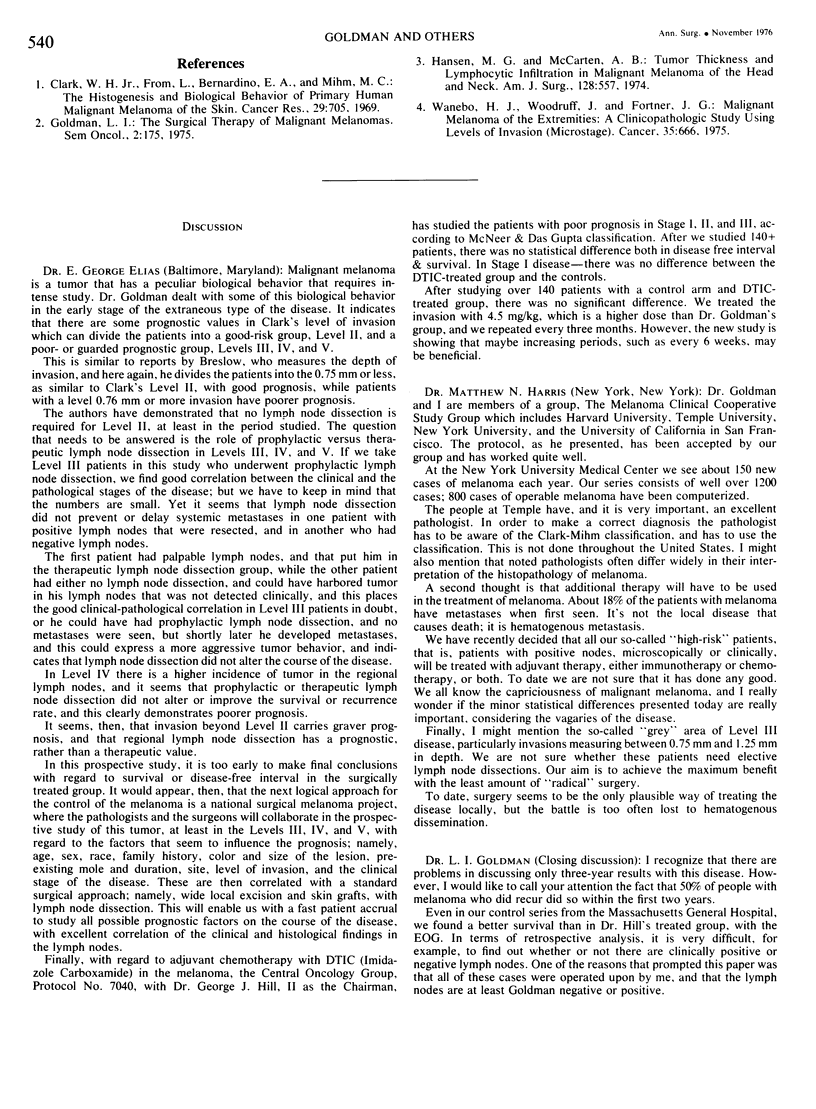Abstract
Since 1971, a prospective treatment regimen for primary cutaneous malignant melanoma performed by a single clinician has revealed the following early observations: 1) A significantly higher number of females with level II disease; 2) No recurrences or metastases to date in 29 patients with level II lesions treated by appropriate surgery; 3) The apparent clinical predictability of lymph node metastases in the group microstaged at level III. 4) An inability to predict lymph node metastases (or their delayed development) in patients with level IV disease; 5) A correlation between lymph node metastases and the development of disseminated disease.
Full text
PDF



Selected References
These references are in PubMed. This may not be the complete list of references from this article.
- Clark W. H., Jr, From L., Bernardino E. A., Mihm M. C. The histogenesis and biologic behavior of primary human malignant melanomas of the skin. Cancer Res. 1969 Mar;29(3):705–727. [PubMed] [Google Scholar]
- Goldman L. I. The surgical therapy of malignant melanomas. Semin Oncol. 1975 Jun;2(2):175–178. [PubMed] [Google Scholar]
- Hansen M. G., McCarten A. B. Tumor thickness and lymphocytic infiltration in malignant melanoma of the head and neck. Am J Surg. 1974 Oct;128(4):557–561. doi: 10.1016/0002-9610(74)90275-x. [DOI] [PubMed] [Google Scholar]
- Wanebo H. J., Woodruff J., Fortner J. G. Malignant melanoma of the extremities: a clinicopathologic study using levels of invasion (microstage). Cancer. 1975 Mar;35(3):666–676. doi: 10.1002/1097-0142(197503)35:3<666::aid-cncr2820350320>3.0.co;2-4. [DOI] [PubMed] [Google Scholar]


